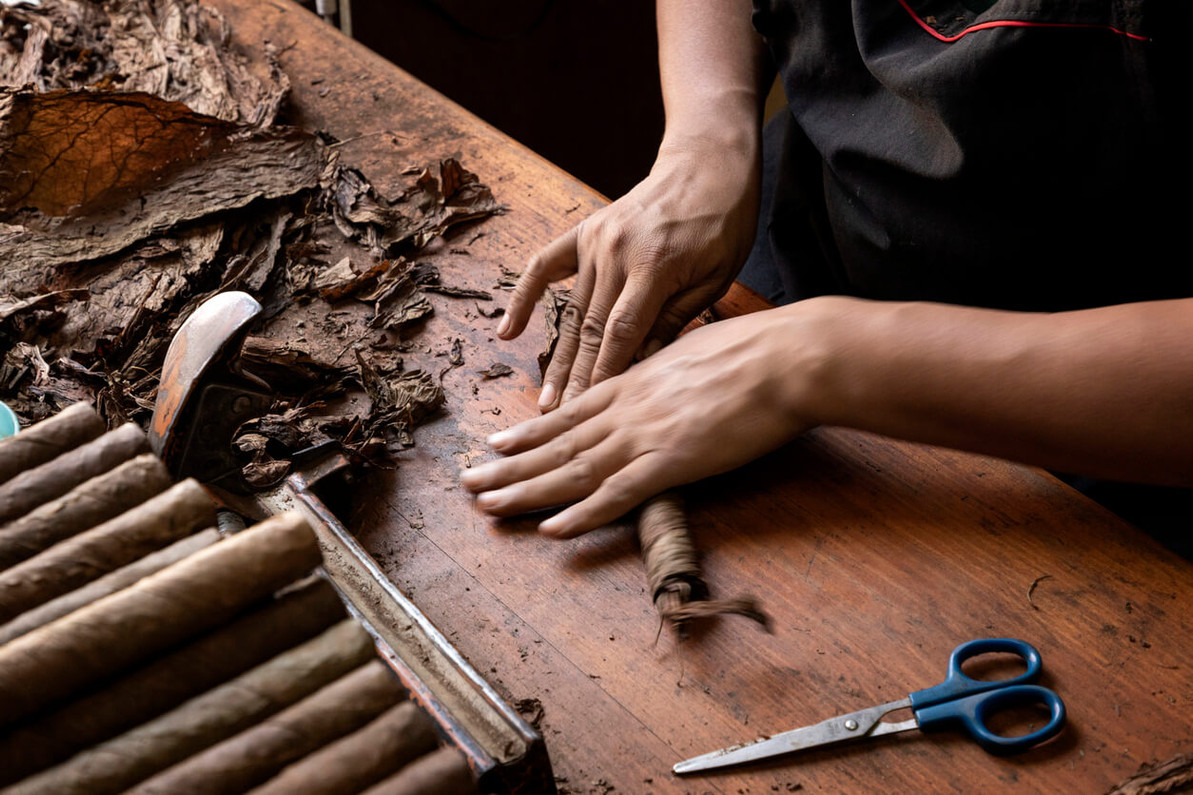How to Roll a Cigar? A Step-by-Step Guide
If you're new to the world of cigar smoking, you might be fascinated by the meticulous craftsmanship that goes into rolling a cigar. This age-old tradition combines art with precision, and understanding it can significantly enhance your appreciation for each puff you take. Whether you're a seasoned aficionado or a curious newcomer, mastering the skill of cigar rolling can add a new layer of enjoyment to your smoking experience. Let’s take a look at how to do it like a pro.
The Basics of Cigar Rolling
Cigar rolling is an art form that has been refined over centuries, requiring patience, skill, and a deep understanding of the tobacco leaf. Before diving into the process, it's essential to recognize the importance of quality materials; choosing the right tobacco and having the correct tools at your disposal will make a significant difference in the outcome of your homemade cigar.
Choosing the Right Tobacco
Don’t underestimate the benefits of quality cigars! The heart of any cigar lies in its tobacco, so when you’re making your choice, consider the origin, flavour profile, and strength to ensure it aligns with your preferences. Whether you're drawn to the robust flavours of Cuban tobacco or the smooth subtlety of Dominican leaves, the choice of tobacco can drastically influence the smoking experience.
Essential Equipment for Cigar Crafting
To roll a cigar, you'll need more than just tobacco: a cigar cutter, a rolling mat, and a good cigar lighter torch for a seamless smoking start are just a few essentials, as each tool plays a key role in the crafting process, ensuring precision and ease as you roll.

Preparing the Tobacco Leaves
Begin by hydrating your tobacco leaves to make them pliable; this step is important when it comes to preventing tears, while ensuring that the leaves can be manipulated easily during the rolling process.
Creating the Binder
The binder is the leaf that holds the filler tobacco in place, and pretty much acts as a foundation for your cigar. Select a leaf that’s both flexible yet durable, and capable of maintaining the cigar's structure without overpowering the filler's flavours.
Adding the Filler
The filler constitutes the bulk of the cigar, and will ultimately end up influencing its strength and flavour profile - this is where you can combine leaves with varying characteristics to create a complex and satisfying smoke. Let your creativity and preference come into play here - the blend of filler leaves can completely be tailored to your liking.
The Rolling Process
Now onto rolling - and know that rolling the cigar is where your skill and patience are truly tested! Starting with the binder, evenly distribute your filler tobacco before carefully rolling the binder around it to form a cylindrical shape. Maintaining even pressure is key to avoiding air pockets, which can affect the burn and draw of the cigar.
Securing with the Cap
The cap is a small piece of leaf used to close the end of the cigar that goes in your mouth, securing the structure. Applying a natural gum as adhesive, carefully place the cap over the head of the cigar, smoothing out any wrinkles to ensure a snug fit.
Curing and Aging
Once rolled, the cigar must be cured and aged; this process allows for the development of flavours and the stabilisation of the tobacco. It’s a bit like marinating a piece of meat; though it requires patience, the wait is well worth it, and can end up significantly enhancing the depth and complexity of your cigar. And once it’s fully cured, you’re ready to whip out your cigarette lighter torch and enjoy a customised, personalised smoke!
FAQs
Can I roll cigars with leaves from any part of the tobacco plant?
The leaves from different parts of the tobacco plant have distinct characteristics. Generally, the top leaves (ligero) are stronger, the middle leaves (seco) are milder, and the bottom leaves (volado) provide the necessary combustion. For a balanced cigar, it's important to blend leaves from different parts of the plant.
Do I need to store my homemade cigars differently from store-bought ones?
Homemade cigars should be stored in a humidor, just like store-bought cigars, to maintain their humidity at an optimal level. This prevents them from drying out or becoming too moist, both of which can affect the smoking experience.
How can I tell if my rolled cigar is too loose or too tight?
A well-rolled cigar should have a uniform firmness throughout its length. If it feels too soft or has soft spots, it's likely too loose, which can lead to a fast burn and uneven draw. If it's hard to draw air through when testing (before lighting), it might be rolled too tightly, which can obstruct the airflow and make it difficult to smoke.
Recent Posts
-
The Role of Fermentation in Cigar Production
When you think of cigars, your mind likely goes straight to their rich flavors, smooth smoke, and un …24th Jan 2025 -
8 Common Humidor Mistakes to Avoid
If you're a cigar aficionado, you know that a quality humidor is essential for maintaining the flavo …23rd Jan 2025 -
The Art of Pairing Cigars and Food
If you're a cigar enthusiast, you're likely always looking for ways to elevate your experience. One …22nd Jan 2025




